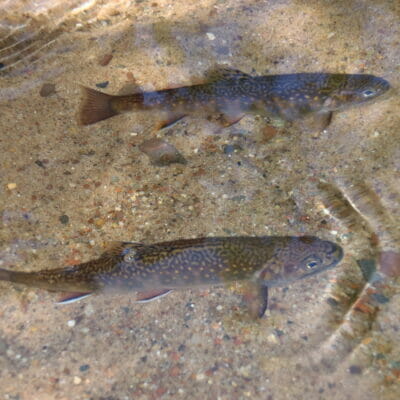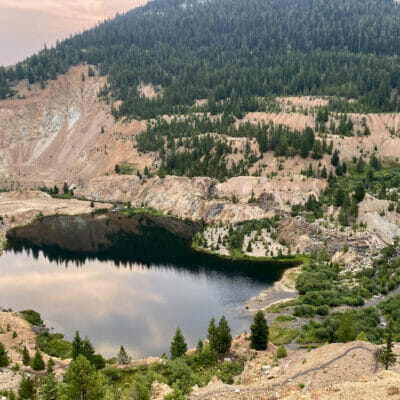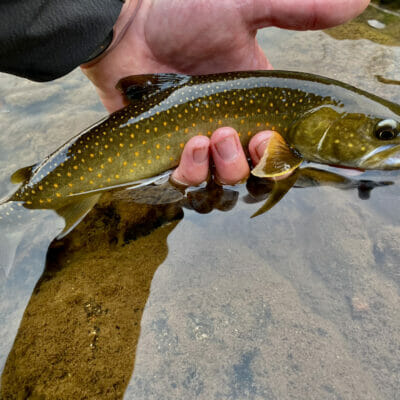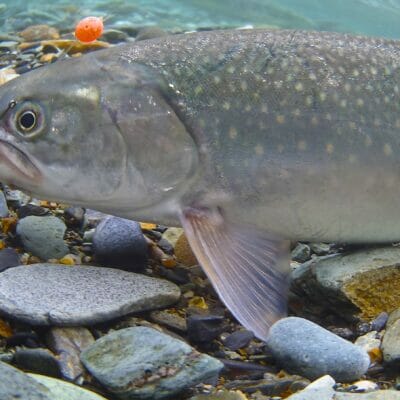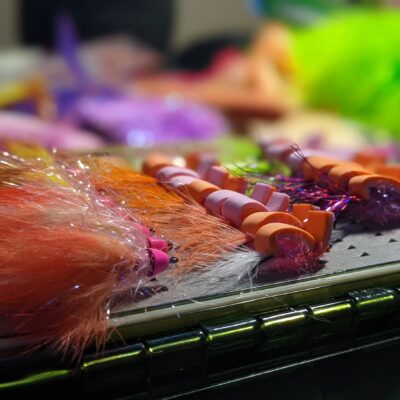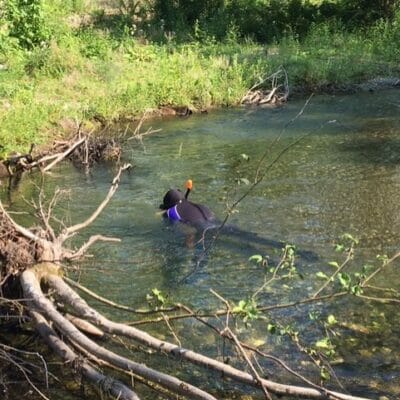For two decades, Whittlesey Creek National Wildlife Refuge has been the site of U.S. Fish and Wildlife Service efforts to restore self-sustaining populations of coaster book trout. Trout Unlimited has been a partner in the work. The efforts haven’t been successful, but have increased knowledge about this unique form of brook trout and what could be needed to restore the fish to Lake Superior tributaries.
by Daniel A. Ritz | September 16, 2021 | Fishing
Unable to see my fly, I was worried I wouldn’t pick up on a take. I shouldn’t have been concerned. My line ripped taut as something far under the surface inhaled my imitation and began to run with it like it had stolen something. I watched my line travel back and forth in the deep pool. Overwhelmed with emotion, I literally slid down the awkward rock outcropping of the outlet channel and brought a 16- to 18-inch brightly spotted and beautiful olive bull trout to the net.”
Bull trout (Salvelinus confluentus) Species summary and status: The bull trout was once found throughout the Columbia River Basin, east to western Montana, south to northern Nevada, west to California and possibly as far north as southeastern Alaska. The main populations remaining in the lower 48 states are in Montana, Idaho, Oregon, and Washington, with…
by Chris Hunt | September 6, 2021 | Trout Talk, Featured
It’s the pegged bead — the target of much derision from the purist crowd, but an oft-used technique to catch big trout and char when salmon eggs are in the water
What to do when your fly box looks like the dog coughed up a flamingo
Rather than an orderly collection of streamers, Gurglers and Egg-sucking Leaches, it looked, as I explained to my friends on a group chat as we planned out the week ahead, like the dog had coughed up a flamingo
Snorkeling is a relatively easy and cost-effective way to survey streams for trout populations estimates. This summer, TU’s Jacob Fetterman conducted his first surveys on a stretch of Camden Creek, a tributary to the Battenkill River, prior to a habitat restoration project. He will survey the same stretch next to estimate the impacts of the project.
